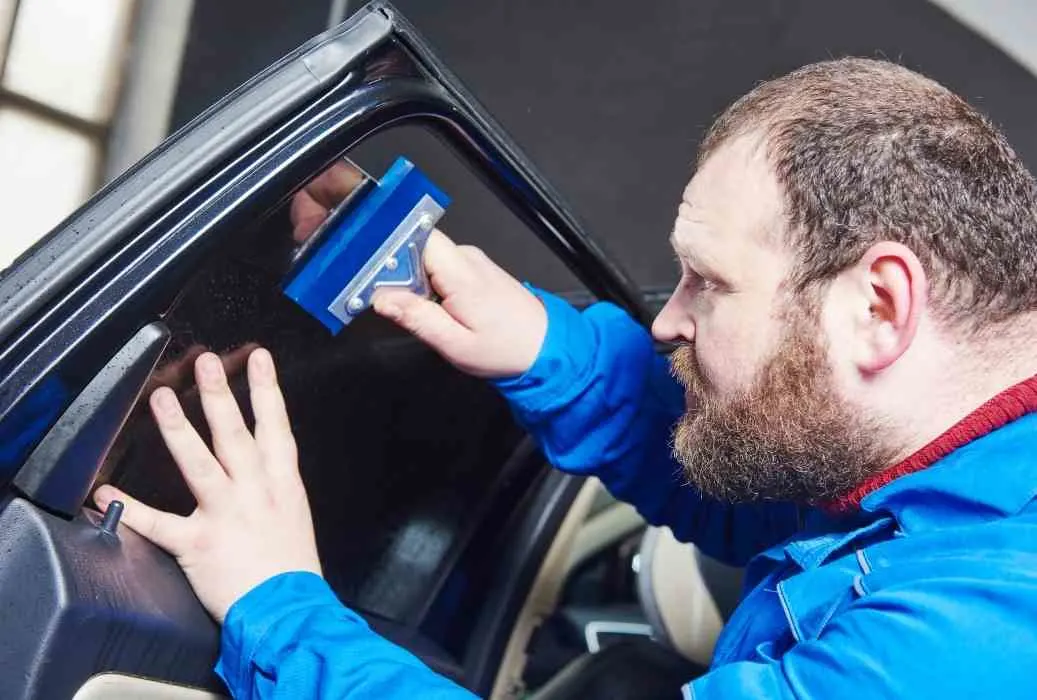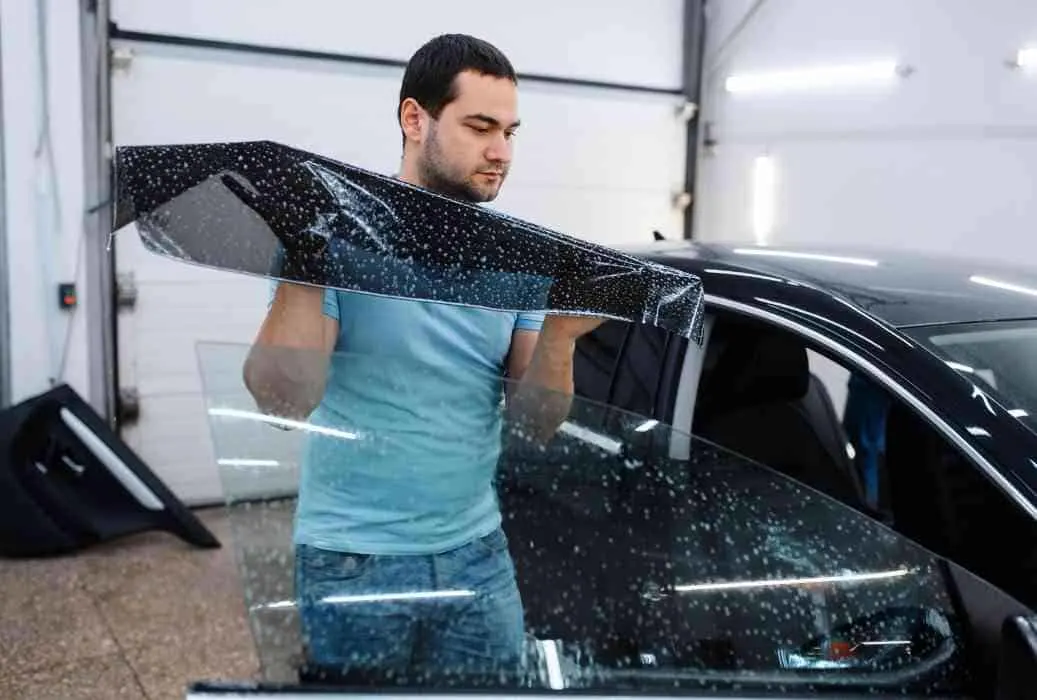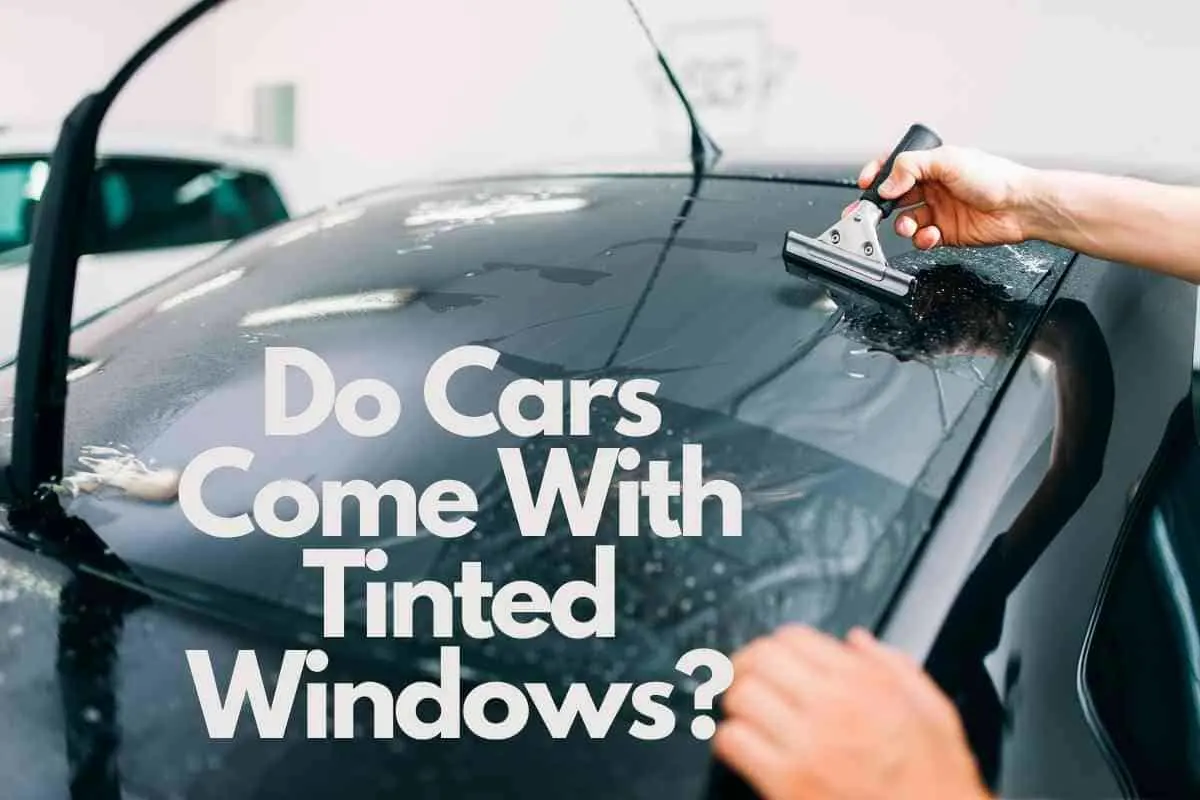Tinted windows make your car look cool and give it a futuristic look. Plus, the darkened windows give you a much-needed sense of privacy.
“Tint” refers to the dark shade that your car’s windows have, and these shades usually come with some level of UV protection, which helps against the harsh sun when you’re driving out on a sunny day.
But do all cars come with tinted windows?
Different cars come with different shades of tint, with varying percentages. But mostly, SUVs and Minivans come with pre-tinted windows from the factory. State laws restrict tinting of the windshield, the driver, and front passenger windows so they aren’t tinted. The back windows usually come with a dark tint, which usually has a 15% light transmission.
Keep reading to learn more about tinted windows!
Do New Cars come with tinted windows?
SUVs are usually allowed to have tinted windows, which is why you’re going to see SUVs and minivans come with factory-tinted windows. The reason behind this is due to the state laws affecting the two types of cars.
Although people might refer to their SUVs as cars, it is actually not the case!
SUVs have different treatments when it comes to tint-related laws, and as such, they are allowed to have the rear windows tinted.
This is because the rear windows are not important for the driver’s visibility.
The driver can easily operate an SUV without using the rear windows, using the side view mirrors and the front windows.
Cars, or sedans, are smaller in size, and it is assessed that the driver can use all the windows to help them drive. Therefore, it is important that these windows aren’t tinted, including the rear windows.

Why do SUVs get special treatment?
SUVs and other larger automobiles can have tinted windows because they fall into the Multi-Passenger Vehicle category.
These cars are able to carry ten or more people. Aside from this, these vehicles are built on different chassis that are better suited for off-roading.
However, the exact laws depend from state to state, so make sure you check your state laws if you want exact information on what types of tints are allowed on what cars and why.
How to know if your car windows are factory tinted?
If you want to make sure that your car is fitted with windows that the manufacturer originally tinted, you can try these different methods.
Several cars have tinted windows that have a small OEM logo in one corner of the glass, along with quality certification information.
These glasses don’t have any exterior film pasted onto them. Rather, you will note that the tint is embedded within the glass itself.
This is due to the glass being colored during its manufacturing process. Compared to aftermarket tinting, factory tinted glass will have no seams at the ends.
Aftermarket tint ends just at the bottom of the window, and you might be able to see it when you fully roll your window up or down.
Since there is no film, factory tinted glass won’t have any unsightly bubbles as well.
Bubbles can be created as air pockets might become stuck between the glass and tint film that is put onto the glass.
Several state laws also prohibit tinted windows on cars, so if you have a car whose front windows are tinted, they are definitely not factory tinted.
What is factory tint percentage?
Before you get into factory tint percentage, you need to know why it matters!
The percentage affects Visible Light Transmission or VLT.
This means that a window with 15% VLT will only allow about 15% of the light inside of the car.
Factory tint usually is high on the rear window to reduce heat transmission and light and reduce the chance of the driver being blinded by lights from cars behind them.
These windows usually have around 15-20% VLT, and deflect around 80-85% of light.
Can I get my windows tinted?

Yes! Even if your car comes with no tint or slight tint on the rear windows, you can always opt for an aftermarket tint.
Aftermarket tints are applied to the window and are removable as well. With professional application, they should look just as good as factory tint.
How many types of tints are there?
When you go to get your car tinted with aftermarket tinting options, you can choose from several options, each with its unique qualities.
Dyed tinting
Dyed tinting involves wrapping the glass in several layers of film that has been dyed to a color of your choice, which absorbs any incoming sunlight.
These are the cheapest, but don’t offer the same level of UV protection, and will become faded over time.
Carbon tinting
Carbon tints are expensive but worth it!
They won’t fade over time and have much stronger UV protection, which will block out the sun’s rays, effectively making your car much cooler. These are also very aesthetically appealing, with a matte finish.
Crystalline tint
This tint is just for UV protection and doesn’t offer any privacy features. These are great for users who don’t mind the lack of privacy but want to stay protected from any UV rays.
Hybrid
Hybrid windows are a combination of several dyed layers with a metal layer between them. This metal layer is usually titanium or some other metal.
These tints are more expensive than simple dyed tints but do not have a reflection like some glasses that have a mirror-like reflection.
Can I have my tint removed?
Unfortunately, if your car has tinted windows from the factory, you will have to get the whole glass changed.
However, if you have any aftermarket tints installed, then you can easily have them removed or changed by a professional!
Final thoughts
Well, there you have it! A detailed guide on the different types of tints, along with helpful advice on whether cars come with tinted windows, what types of cars have them, and how to get it installed or removed.
We hope this was helpful, and you had your query resolved!
